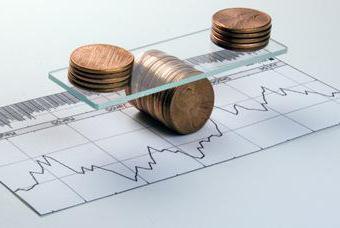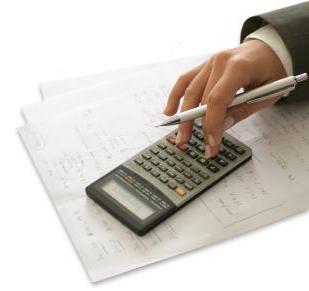In the process of its activity, any enterprise spends funds for various purposes. For example, the seller, in addition to devices for trade, needs a room. Having a certain area (in ownership or use), the entrepreneur pays for electricity, etc., charges employees a salary. Thus, the subject has capital and current costs. 
Distinctive features
Current costs are those incurred to generate profit or directed to maintain the company's profitability. The benefit of such expenses is used in the current period. Simply put, the current costs include the costs of the daily needs of the enterprise. These costs include:
- Salary to employees.
- Annual depreciation.
- Payment of lighting, rent, heating, etc.
Capital expenditures represent the total amount of funds aimed at the acquisition of means of labor or their modernization. Consider these costs in detail. 
Classification
Specialists share capital costs depending on the organization that bears them. So, allocate the costs of ordinary enterprises and banks. The first direct funds to maintain, improve, expand production. They spend available assets on the acquisition, repair, depreciation of various objects involved in the activity. For example, new technological equipment is purchased, new areas are rented, and so on. Banks spend money in other directions. Most of them are aimed at optimizing the activities of employees, the functioning of the system, and increasing the network.
Definition
There are several approaches to the interpretation of the term. In accordance with one of them, capital expenditures are funds that are allocated by the enterprise for the purchase and modernization of physical assets. Some authors give a different definition. Capital costs, in their opinion, should be called investment in the acquisition of fixed assets, as well as the cost of servicing borrowed funds issued for their purchase. 
Specificity
It is important for any industrial enterprise to have technological equipment working without failures, premises of sufficient area. A certain amount is allocated to create the proper conditions for activity. At the same time, it can be spent not only on the acquisition of the OS, but also on their repair. Capital expenditures can be directed, for example, to the replacement of windows in the workshop or the construction of a new warehouse. OS constitute the basis of the enterprise. Their share in the total property of the company can reach up to 60%. Calculation of capital costs is carried out by summing up the costs provided for the acquisition, improvement, repair of fixed assets.
Documentation Features
After the end of reporting periods, OS information is reflected in the active balance section. In this case, the names of specific assets are given. In the process, most of the costs associated with the achievement of the goals set for the company. It, in turn, consists in obtaining the planned financial result. After determining the annual, net income of the enterprise, the accountant establishes the partial cost of the fixed assets planned for implementation. Accounting for capital costs is carried out at the time of accrual of interest, formed in relation to the asset invested in the reserve. For most companies, this indicator varies depending on the base rate. 
Expense management
As mentioned above, capital expenditures consist of funds associated with the improvement or acquisition of fixed assets recorded on the balance sheet.Any enterprise should have a clear cost management system in place. Responsible employees periodically determine the amount of costs, as well as the amount of funds that they are covered. Information analysis is carried out in accordance with reporting documents, as well as plans. When preparing a company’s budget, indicators such as:
- The initial cost of the OS available.
- Planned depreciation charges.
- The number of pledged, unspent payments for depreciation of funds for previous periods.
- The approximate total cost of equipment that will be put up for sale or replaced in the coming year.
- The approximate total amount of depreciation charges for the acquisition of fixed assets in the current period and the total amount of deductions on its last day.
- Residual value.

Bank expenses
Above were considered the costs of industrial enterprises. Costs have a slightly different meaning for banking institutions. Their needs are limited to buying office equipment, equipping the premises in which they are located. As the analysis shows, the volume of capital investments of banks is significantly less than that of industrial enterprises. This is due to the fact that the share of fixed assets in the asset system is not more than 3-4%. Meanwhile, relatively small investments in facilities are offset by the costs of intangible assets. In particular, funds are allocated for optimization of accounting and management systems, training and retraining of personnel, etc. It is worth saying that intangible assets in Russian financial institutions comprise an even smaller share than fixed assets. On average, they account for about 1%. A feature of the banking sector enterprises, therefore, is the relatively small amount of capital expenditure.
Additionally
In the activities of the enterprise a special place is occupied by capital costs. As a rule, they are not regular. In practice, a company with a high profitability can set a certain period after which the OS will be modernized or replaced, the premises expanded or repaired. Funds allocated for these needs are usually intended. Capital investments are aimed at achieving significant results in increasing the financial benefits brought by a particular asset of the OS. Own or borrowed funds may be spent on the modernization, repair of machine tools, the construction of new workshops, etc. In the latter case, the cost of servicing the loan will relate to current costs. 
Conclusion
The main task of any enterprise is maximizing profit in the course of its activities. To do this, you need to analyze your work, compare the achieved results with the planned ones. Far from the last role in this is the cost management system. The timeliness of investments in a particular asset depends on how efficiently it is organized. Accordingly, this will determine the effectiveness of its return. The analysis uses accounting data. Reporting should be made so that information is available for each asset. This will identify unproductive funds. Based on the results of the analysis of the effectiveness of the OS, an estimate of future expenses is compiled. It should include only the necessary costs, which really will increase the profits of the enterprise. It is advisable to get rid of non-revenue generating funds. The funds received should be used to improve other facilities.








